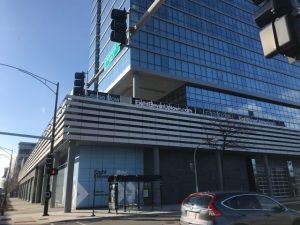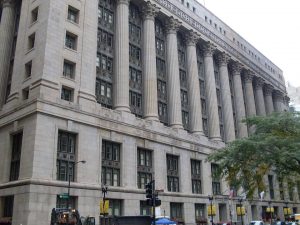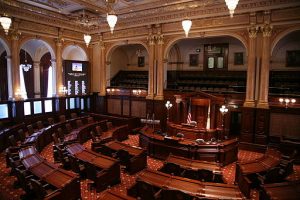Six years after the Pilsen Planning Committee implemented a quality of life plan to improve the neighborhood, Pilsen’s murals have yet to be restored, disappearing every year and being replaced by what muralist in the community call “cartoonish advertisements.”
Originally introduced in November 2006, Pilsen’s Quality of Life plan proposed five strategies to build a “strong Mexican community and culture.” One of these was the restoration of the community’s murals, focusing especially on 16th street. Many of these murals were painted more than 40 years ago and some have even disappeared.
“It’s a form of education and aesthetics and this is part of our culture,” said Jose Guerrero, a first generation Pilsen muralist and the founder of Pilsen Mural Tours. “As the artist we try to represent the people in the community and compliment what the people are doing,” he said.
The muralist movement in Pilsen began in the late 1960s. Mario Castillo painted the first mural “Metaphysics” in 1968 and launched the mural movement.
Many of the murals reflect Mexican culture, history and the issues of the community like immigration, the latter of which can be seen in a mural titled “Gulliver in wonderland” by Hector Duarte on the corner of 1900 W. Cullerton St.
“You learn about your culture,” said Hector Duarte another Pilsen based muralist, “you have the motivation to make art.”
But more importantly the Pilsen community believes these murals act as a way to educate others of the Mexican heritage present all over the facades of buildings and alleyways and to communicate a message.
“In our area we want to always put a message, no matter what,” said Oscar Romero, a first generation Pilsen muralist. “The people want to reflect their spirit or their history,” Romero said.
Despite the important role these murals play in this community, they are wiped off buildings by the city when they are marked with graffiti. Or in some cases they are destroyed by gentrification. “Every year a minimum of one disappears, but sometimes it’s that there are new owners who destroy their house and make a new one or they change the color and they don’t respect the culture here.”
Gentrification is no new issue to this community. According to a 2011 report from the U.S. Census Bureau, Pilsen, once a predominantly Mexican community in the 1960s and 1970s, is less so today: Only 24.4 percent of the area’s population is of Hispanic heritage.
Now many of the new generation of artist in Pilsen “don’t take the challenge to continue with the [cultural] tradition,” Duarte said. “The young artists who come to paint the murals are from outside the barrio, but right now [they] have begun to paint different murals but they are not murals, it looks a cartoon and it’s not related to the neighborhood and it’s not good.”
Muralists like Romero feel the new generations murals lack the technique and do not communicate the message from the old generation that “Latinos are here, we have values and want to give to this community.” Instead he believes the younger generations of muralist rely on technology to paint their murals and they are reluctant to get “dirty hands.”
“The murals today are like Campbell’s soup. You open it, and it’s already done. It [has] no flavor,” Romero said. “I don’t see all the knowledge from the first generation muralist to the last generation of muralist. This kind of thing in my own opinion is very dangerous.”
If the Quality of Life plan does in fact begin to restore the murals in Pilsen, the muralists believe it could be beneficial to the community. “I think a lot of people would appreciate it and there’s a lot of new people coming and doing murals and you can see for yourself it’s sort of cartoonish or it doesn’t speak to the issues,” Guerrero said.
The Pilsen Muralist also believe the restoration of the murals from over 40 years ago could help bring back the “culture” and “perspective” of the community.
“If you restore these murals it would be a very good impact because you would rescue the old message from the first generation,” Romero said.
While other muralists like Duarte believe the murals need to be restored he believes more can be done.
“Yeah we need to restore [murals] our history is here,” Duarte said. “At the same time we need to create new murals and we need to continue with the intention with the murals to educate people, we need an organization to take care of those murals.”







Be First to Comment